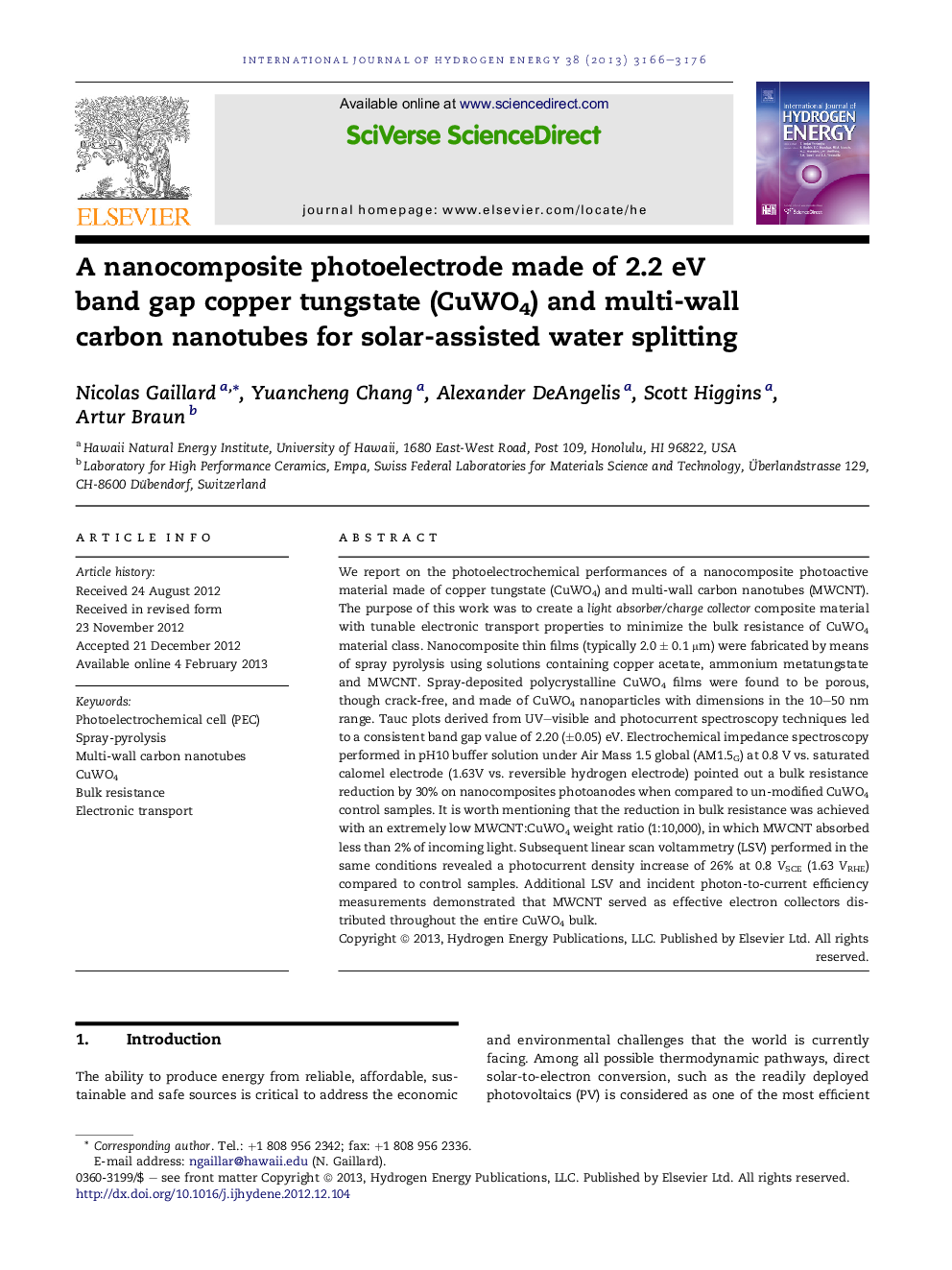| کد مقاله | کد نشریه | سال انتشار | مقاله انگلیسی | نسخه تمام متن |
|---|---|---|---|---|
| 1275731 | 1497537 | 2013 | 11 صفحه PDF | دانلود رایگان |

We report on the photoelectrochemical performances of a nanocomposite photoactive material made of copper tungstate (CuWO4) and multi-wall carbon nanotubes (MWCNT). The purpose of this work was to create a light absorber/charge collector composite material with tunable electronic transport properties to minimize the bulk resistance of CuWO4 material class. Nanocomposite thin films (typically 2.0 ± 0.1 μm) were fabricated by means of spray pyrolysis using solutions containing copper acetate, ammonium metatungstate and MWCNT. Spray-deposited polycrystalline CuWO4 films were found to be porous, though crack-free, and made of CuWO4 nanoparticles with dimensions in the 10–50 nm range. Tauc plots derived from UV–visible and photocurrent spectroscopy techniques led to a consistent band gap value of 2.20 (±0.05) eV. Electrochemical impedance spectroscopy performed in pH10 buffer solution under Air Mass 1.5 global (AM1.5G) at 0.8 V vs. saturated calomel electrode (1.63V vs. reversible hydrogen electrode) pointed out a bulk resistance reduction by 30% on nanocomposites photoanodes when compared to un-modified CuWO4 control samples. It is worth mentioning that the reduction in bulk resistance was achieved with an extremely low MWCNT:CuWO4 weight ratio (1:10,000), in which MWCNT absorbed less than 2% of incoming light. Subsequent linear scan voltammetry (LSV) performed in the same conditions revealed a photocurrent density increase of 26% at 0.8 VSCE (1.63 VRHE) compared to control samples. Additional LSV and incident photon-to-current efficiency measurements demonstrated that MWCNT served as effective electron collectors distributed throughout the entire CuWO4 bulk.
Figure optionsDownload as PowerPoint slideHighlights
► Nanocomposite materials made of CuWO4 and carbon nanotubes were synthesized.
► The addition of nanotubes successfully lowered CuWO4 bulk resistivity.
► Nanocomposites shown photocurrent density 30% higher than control samples.
► IPCE analyses shown that nanotubes acted as distributed current collector in CuWO4.
Journal: International Journal of Hydrogen Energy - Volume 38, Issue 8, 19 March 2013, Pages 3166–3176